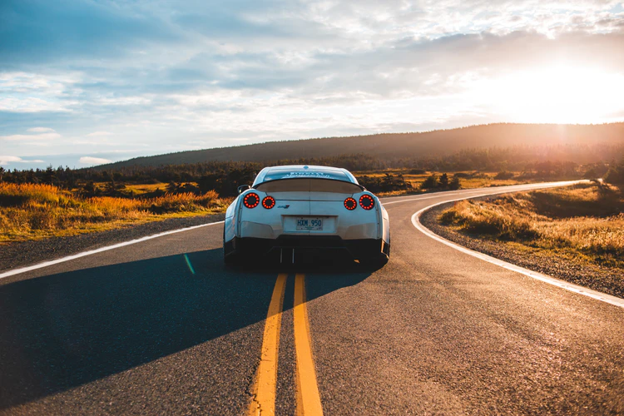Canadian Auto Insurance Coverage

When you finally decide on getting the car of your dreams and finally settle on a model, it can get confusing as to what car insurance you would need for it. There are different car options and you decide based on the car’s price, age, and model, and it’s the same way when you decide on insurance. A lot of mistakes people make nowadays stem from jumping in before understanding what type of car insurance they actually need.
Every auto insurance is completely unique to each other – there are different ways to determine what you need before hastily getting one. Ask yourself what kind of insurance would you need for your vehicle, identifying the ideal car insurance company you should go for, and lastly, understanding the car policy offered and compare them.
Here are ways to help you decide on what kind of car policy you would need for your car choice and understand the coverage of Canada’s car insurance policies.
What is Auto Insurance?
Auto insurance is a protection policy that most people with vehicles buy to reduce payments when auto accidents happen. When accidents happen, car owners are expected to pay for damages. Instead of paying out from their pocket, car owners get auto insurance that they pay annually or monthly, depending on what they’re able to pay. Think of it as a smart protection feature that ensures your car will be fine no matter what happens.
There are different ways to pay for car insurance that most companies offer for their clients:
Why go for annual auto insurance?
There are car insurance premiums that you can go for that lets you pay annually – it will give you a discount for paying for the full year, compared to monthly payments. This is more convenient for people who have more bills to deal with, and in reality, a cheaper option. Why does annual auto insurance cost less? They provide a discount for members who choose this option as the monthly insurance is more work for the company to keep it active.
This is ideal for people with fluctuating salaries or those who work seasonally as they won’t have to deal with the insurance payments every month. People who go for annual payments will completely avoid the possibility of late fees or have the insurance cut off when they are behind their payments. If you’re always travelling and you have no time to stop by banks or other payment options to process your bills, this annual insurance is the perfect fit for you.
Why go for monthly auto insurance?
While monthly fees are more doable with the overall fee cut to 12 months, most companies charge installment fees as it’s more work for companies to process monthly payments. Not all companies do these, there are ideal companies like Autoloans.ca that ensure everyone, even people with bad credit or no credit history – can get the insurance that works with what they need.
While it does have monthly installments, monthly car insurance is still ideal for some people as it allows them to budget their expenses properly. Since most households have a monthly salary, it can be easier for them to divide and budget their expenses and bills on a monthly basis. If you want to change the policy with the one that works better for you, you can easily see the changes through this payment method.

Types of Auto Insurance Coverage
There are different kinds of auto insurance coverage that works for different kinds of vehicles you’re using and what you’re caring for. Since not all vehicles are used the same way and have different risks, the insurance is tailored depending on what is needed. If you’re quite unsure of what insurance to get, there are companies willing to walk you through on the levels of care they provide and policies that work with different drivers.
Aside from the mandatory insurance issued by the government, there are other types of insurance you can get to ensure all-around protection. There are three different auto insurance coverage that you can get: Motorcycle Insurance, Classic Cars, and Seasonal Vehicles.
Motorcycle Insurance
Motorcycle insurance, as the name depicts, is catered to people who own a motorcycle. It commonly covers third-party liability, accident benefits, and uninsured automobile coverage for all-around protection. Here is a thorough explanation of each covered motorcycle protection when an accident happens:
- Third-Party Liability – this is to protect the first party (you as the insurance holder) from legal liability to a third party (the other person or the property involved in the accident). The second party (the insurance company) handles the necessary services and payments needed to repair the damages caused by the accident. However, this type of insurance doesn’t cover liability for the damages your car sustained during the accident, or even the injuries.
- Accident Benefits – this provides compensation if you, your passengers, or the pedestrians are hurt or killed in a car accident. It doesn’t matter who is at fault, this insurance type will provide the same coverage. This type is compulsory to almost all provinces in Canada, except for Newfoundland and Labrador. It usually covers the following services:
- Medical and rehabilitation services
- Funeral expenses
- Loss of income from disability
- Death benefits
In Ontario, this insurance also offers the following for accident benefits:
- Caregiver benefits
- Non-earner benefits
- Other expenses, like education costs, housekeeping and maintenance
- Uninsured automobile coverage – this provides coverage that helps you pay the expenses needed when you’re hit by an uninsured driver. But how do you know if it’s ‘uninsured’? Here are the categories for uninsured drivers:
- Their liability limits are not enough to provide payment for your bills after an accident, or
- Their liability limits are usually less than or equal to what’s considered an underinsured motorist coverage limit
These are the common coverage for uninsured automobile coverage:
- Uninsured motorist bodily injury coverage or UMBI provides payment for medical bills from a crash caused by an uninsured driver.
- Uninsured motorist property damage coverage or UMPD provides repairs for property destroyed in an accident caused by an uninsured driver.
Classic Cars
When you have a car that’s dated from the 1950s or even just the early 1990s, you would do everything to provide protection for your valued possession. Most of these vintage cars are only up for display, but some people actually drive them around for their daily errands and travel. Since these cars are no longer in production and the parts are harder to get by, you would need better car insurance for these beloved vehicles.
You would need classic car insurance – this type of insurance covers your collectible in a guaranteed amount is accepted by you and the insurance company. The price of the car is usually assessed by a professional, research by the company, Old Cars Report Price Guide, or even old documentation. The price of a vintage car increases over time, depending on the condition and upkeep of the car, and will likely cost a fortune over the following years.
Here is the common collector car insurance coverage:
- Classic Car – usually aged 19-24 years old, restored, and in good working condition. It is greater than the average value of other cars of the same make and model year.
- Antique Car – usually aged at least 25 years old and in good working condition with its original parts. In some states, cars over the age of 20 can be considered as an antique car.
- Modified Car – usually defined by companies when the car is mostly altered – from engine, body, chassis or interior that can severely affect the value of the car. Usually, companies don’t provide insurance protection under classic car insurance for this kind.
- Kit Cars and Replicas – this is for vehicles that are over 24 years old and have separate manufactured components or cars that replicated vehicles over 25 years old.
Seasonal Vehicles
If you have vehicles you rarely use like the snowmobile during winter or an RV during summer breaks, then you need a special kind of auto insurance for these vehicles. Here are a few examples of vehicles you don’t drive all year round that you can apply seasonal vehicle insurance to:
- All-terrain vehicles (ATVs and two-up ATVs)
- Motorcycles, mopeds, motor scooters and motor-assisted bicycles
- Off-road vehicles
- Recreational vehicles (RVs)
- Snowmobiles
- Classic cars
There are specific requirements for using seasonal vehicles for provincial governments, but they’re usually:
- Minimum driver age
- Insurance and registration
- Helmet use
- Highway crossing
- Private property use exemptions
Complete auto insurance can help secure your vehicle against fire, burglary and different sorts of harm while it is being stored. Regularly, you keep up insurance for your motorcycle for the winter. Motorcycle insurance is usually based on a year of coverage and records for the off-season storage. Classic car protection might be quite similar. To understand more about this insurance, talk with your protection agent.
You might have the option to remove the obligatory liability and optional crash benefits coverage while your vehicle is not used. Every region and domain has explicit requirements for seasonal vehicles, including motorcycles, mopeds and classic autos.

What Does Auto Insurance Cover?
Car insurance shields you from the financial risks you could bring about by harming somebody or harming their property with your vehicle. It additionally shields you from completely replacing the vehicle or the items in it when the vehicle is vandalized.
Auto insurance covers a wide range of different circumstances wherein you’d be obligated to take care of the repair fees or medical costs. Depending upon the condition, it might cover you, the passengers in your vehicle, or a pedestrian who was harmed in the accident. Every auto insurance approach is split into various segments, and you can choose the measure of inclusion you get under every part when you buy the policy, after accounting for the base measure of coverage required by your state.
Collision
Collision insurance is a coverage that provides help to pay for fixing needed or overall replace your vehicle if it’s harmed in an accident with another vehicle or item. An example would be a fence or a tree. In case you’re renting or financing your vehicle, collision insurance is usually required by the bank. If your vehicle is paid off, the collision insurance is a discretionary inclusion on your auto insurance arrangement.
Specified Perils
If your vehicle gets stolen and never resurfaced or resurfaced with a great deal of damage, getting car insurance will help you out. If the fire starts in your neighbour’s home and eventually spreads to your carport and devastates your safeguarded vehicle or truck, car insurance will provide aid for these damages. Specified perils pay just for misfortunes brought about by risks explicitly listed in your policy. These hazards are:
- Fire
- Burglary or attempted robbery
- Lightning
- Hail
- Rising water
- Earthquakes
- Windstorm
- A blast, revolt or civil disturbance
- The falling or forced landing of airplane or parts of the airplane
- The stranding, sinking, burning, crash or impact of any sort of transport in, or whereupon, a depicted vehicle is being carried on land or water
All Perils
If by chance that the harm is caused while your vehicle was taken by somebody in your family or somebody you’ve enlisted to drive your vehicle (e.g., an employee or a worker you hired), with all the dangers present, this part of the auto insurance would be covered.
Comprehensive
If you’ve experienced strong winds cause flying debris that damages your vehicle, vandals break into your carport and wreck your truck, you would need this car insurance. A comprehensive coverage incorporates all risks, aside from impact, or upset of the vehicle, or harm brought about by burglary by an individual living with your car or who fixed your vehicle.
How to Buy Auto Insurance
Buying car insurance can be daunting, especially if you’ve recently purchased a car and you have no idea what to expect. There are ways you can determine what you need and see what kind of insurance would best suit you. Here are the best decision-making process in buying the right auto insurance:
- Decide on how you want to buy your auto insurance. Are you going to go where your friend gets their insurance? Check your area and see if there are better offers instead.
- See what kind of car insurance would better suit your needs. Since there are different kinds of vehicles, see what works well for your car and what it needs depending on the perils you face.
- Fill up an application for accurate quotes. Whether you work with the company you chose or do it yourself, list down all the information about the cars and drivers in the household.
- Compare the quotes you got with other companies. It’s easier if you get a quote or plan that works better for you, but you won’t be able to get it until you do your own research.
Settle with your new car insurance company. Companies will work with you and provide the proper information you need to get the insurance you want and need.
How to Submit an Auto Insurance Claim
If by chance that you’ve been through an accident, you will need to claim insurance for compensation. In order to submit an auto insurance claim, these are the necessary steps you need to go through:
- Call the police – after a vehicular accident, begin recording a case by reaching the police. You will likely be stirred up after an accident and may not be in the best situation to survey what’s occurred. Having an official to note and record the occurrence in the police report is in every case best.
- File an accident report – It’s always better to understand what your legal responsibilities are and do what needs to be done.
- Gather information about the accident – Always prepare the accident information you need to file your insurance claim.
- Call your insurance company – Contact your insurance company and do the necessary steps they require you to do in order to complete your claim.
Final Thoughts
If you’re quite unsure if you need auto insurance for your car, it’s always better to do your own research. You can even ask around about the ideal car insurance companies that would work better for you and would provide all you need to safeguard your vehicle. It’s always necessary to do your own research, pay attention to feedback, and compare quotes and policies. It’s always best to have car insurance in case accidents happen!

